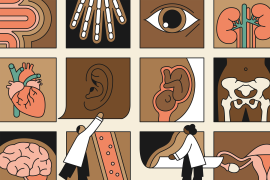Patients can use personal health records (PHRs) to communicate with physicians, enter their health data, and access information. In the United States, uptake of this technology is modest but increasing due to employer interest, health care reform, and the market entry of Google and Microsoft. In a new study, 2007–08 Commonwealth Fund Harkness Fellow Shane R. Reti and colleagues interviewed seven early adopters of PHRs, representing hospitals, ambulatory care facilities, insurers and health plans, government departments, and the commercial sectors. Most of the organizations enable patient-centered functions, like permitting patients to authorize another person as a proxy for PHR access. In addition, most organizations restrict third-party Web site advertising and prevent reuse of patients' self-entered data. However, only four of seven organizations allow patients to view their full diagnostic list from their electronic medical record (EMR) and none allow patients to view clinical notes from their EMR. While physicians have expressed concerns that clinical notes are ill-suited for patients, the authors argue such restriction is antithetical to patient-centeredness and suggest further work to examine the consequences of such access. Finally, they note a wide variation in length of time for clinicians to respond to patient e-mails—from 24 to 72 hours. The authors recommend a one-business-day response time that, at a minimum, acknowledges receipt and provides a likely time frame for turnaround.


